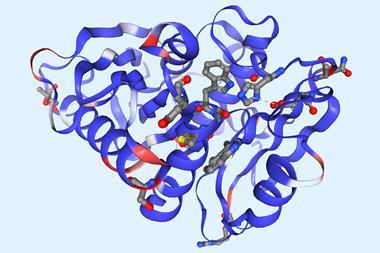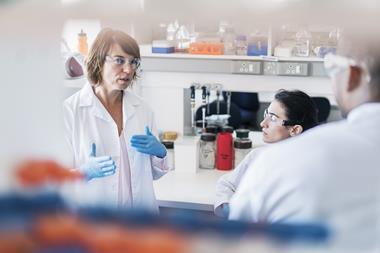Sustainability must be fully incorporated into material design
To the general public, the plastic problem is all about disposable single-use packaging. We are exhorted to use fewer plastic carrier bags, and products are sold as eco-friendly on the basis that they are packaged in paper, glass or steel – a sometimes questionable claim. But it’s essential to realise that demonising polymers and plastics is not the solution. They are more than simply packaging.
We use plastics because they can do things other materials cannot. Many of the technologies of the future, from electric transport to medical devices, will rely on really good polymeric materials. We have an opportunity and an obligation to think about how we can redesign plastics to make them more fit for purpose, both for existing applications and for those we will need tomorrow. In the process, we may even be able to reduce or reverse some of the damage plastic pollution has already caused.
At the Chemical Sciences and Society Summit (CS3) in November 2019, an international team of researchers representing the chemical societies of China, Germany, Japan and the UK gathered to discuss early-stage research into making plastics more sustainable. We identified four major research challenges where chemistry, driven by application-aware fundamental research and international cooperation, has significant potential to reduce the negative effects of plastics. We need to understand their impact in the environment; design new, more sustainable plastics for future use; develop technologies that help with recyclability and/or degradation; and move to closed loop recycling.
We need to rethink how we design the polymers and additives that make up plastics
These four research challenges are interlinked. For example, when thinking about sustainability, you have to look across the entire life cycle of the material, starting with the raw materials. Currently, plastic production is interwoven with the petrochemicals industry, which contributes significantly to greenhouse gas emissions. We can already look at reducing that impact. We recommend diversifying the range of raw materials used to produce plastics to include plant-based byproducts, biomass wastes, used plastics and even waste gases like carbon dioxide.
To better use these alternative feedstocks, we need to rethink how we design the polymers and additives that make up plastics. Today’s plastics were primarily designed for functionality, without due consideration for what happens at the end of their life. The plastics of tomorrow cannot afford to continue this trend. That doesn’t just mean designing polymers to degrade rapidly; in some scenarios more durable polymers are the sustainable choice. But even if a material is designed to last for a long time, it still needs to be capable of being efficiently repurposed or broken down.
With the right design, we can make polymers easier to recycle by making them so that they disassemble more selectively, and require less energy to do so. Some options being investigated include polymers whose chemistry allows for triggered degradation, resulting in the formation of small-molecule products that can be chemically recycled or transformed into other high-value products. The chemical recycling of PET is already successful, but could be made more efficient. The harder to recycle polyolefins, like polyethylene and polypropylene, present more of a challenge.
Other polymers are being designed to form plastics that undergo complete biodegradation to non-toxic metabolites once they enter the environment. Aliphatic polyesters, including polylactide and polyhydroxyalkanoates, and thermoplastic starch are already commercially available. Future research needs to expand the range of degradable polymers and properly quantify and qualify their effects – and those of their degradation products – in the environment.
It’s also important to consider the vast quantities of waste plastics already in our soils, oceans and air. As plastics undergo physical weathering they fragment, and the small sizes of these particles makes characterising them challenging. A piece of plastic even of a few millimetres in size is an amazingly engineered product with different structures operating across multiple length-scales, including spherulites, crystallites and amorphous regions of the polymer chains. We are working internationally to develop the analytical methods and theoretical models to provide chemically informative data across each of these scales, in a range of environments and in real time.
We should not be looking for a single solution
The plastics problem cannot be solved by chemistry alone. Plastic disposal methods and infrastructures vary across the world, so reducing the environmental impact of plastics will require changes in policy, legislation and global waste management. The use of polymers across many different sectors also means that we should not be looking for a single solution to the problems currently caused by plastic waste. But by developing a suite of new technologies, chemists can help to tweak the design of these plastics so that they still deliver the properties we need, but in a more sustainable way.
The issues that make plastics problematic also apply to many other materials, including those being used as substitutes for plastics in packaging. Sustainability, environmental impact and responsible innovation need to be integral to the science, manufacturing and design of all materials – not an afterthought.
The full CS3 report is now available online
The plastics problem
- 1
- 2
- 3
- 4
- 5
- 6
- 7
 Currently reading
Currently readingAddressing the plastics problem


















No comments yet